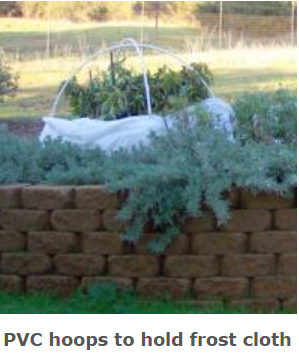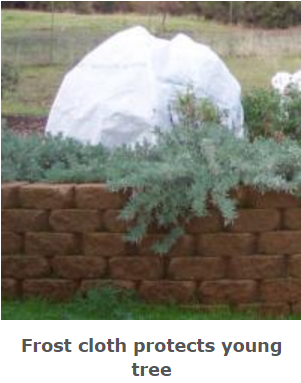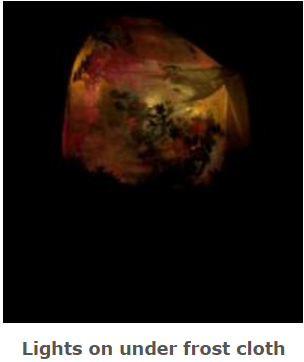Advice from the Help Desk of the
UC Master Gardener Program of Contra Costa County
Help Desk Client: I've just bought a home in the County. It has an extensive garden with many different plants. I moved from Southern California where I didn't have to worry about frosts. I have Oleander, Escallonia, Breath of Heaven (Colonema pulchellum), Myrtle (Myrtus communis),
Response from the MGCC's Help Desk:
Thank you for contacting the UC MGCC's Help Desk with you question on frost protection for your landscape plants.
- Oleander can survive in temperatures down to 15-20 degrees, but even a light frost may damage developing buds and leaves which might affect flowering next season.
- Escallonia will suffer damage at 10-15 degrees, but will recover quickly.
- Breath of Heaven will do OK in light frosts, but will need protection from a hard freeze.Pittosporum can withstand brief forays down to 25 degrees.
- Myrtle is good down to 5-15 degrees.
- Lorapetalum should withstand frost, but needs protection from a hard freeze.

I think all of your plants mentioned above should tolerate frosty weather just fine, but newly planted shrubs will be at more of a risk because their root systems have not yet become established.
Some of the tools to protect your tender plants include frost cloth, sheets, blankets, lights and stakes or framework to hold covers off foliage. Frost cloth has the advantage that, because it allows light and air to penetrate, it can lay directly on foliage and can stay on the plants for a few days at a time. You can find frost cloth at a local nurseries, most home/hardware stores or online. Plastic is not usually recommended to cover your plants; plastic is not a good insulator and can cause more damage, especially if it touches the foliage. However, use of plastic over a frame could work; Ruth Bancroft Gardens in Walnut Creek uses such frames to protect their vulnerable plants.
When frosts or freezes are forecast, make sure your plants are well watered (not a worry if we've had rain recently). Cover plants before sunset to capture any heat radiating from the ground. If you use sheets or blankets instead of frost cloth, remove them the next day when the temperature gets above freezing.
Historically, Central County (Walnut Creek) averages a low of 39 degrees, but has gotten down much below that for extended periods in some years. West County usually stays warmer while East County can be similar. However, there are many microclimates throughout the County depending upon elevation, exposure, etc. so you must check out your particular situation. For example, in Walnut Creek in November 1985 it was 25 degrees; December 1990, 19 degrees; and Jan 2007 it dropped to 20 degrees. As you can see, the possibility for real cold exists, but is not likely in any one year.
Here is a link to a publication from the UC Sacramento Master Gardeners about frost protection where you will find even more information and photos of how to cover plants: http://sacmg.ucanr.edu/Frost_Protection/ , Pictures are from SacMG document.
Please let us know if you have any more questions. Stay warm!
Note: MGCC's Help Desk closed Dec 19th, 2016 through Jan 2, 2017. However, the UC Master Gardeners Program of Contra Costa's Help Desk is usually available year-round to answer your gardening questions. Except for a few holidays, we're open every week, Monday through Thursday for walk-ins from 9:00 am to Noon at 75 Santa Barbara Road, 2d Floor, Pleasant Hill, CA 94523. We can also be reached via telephone: (925) 646-6586, email: ccmg@ucanr.edu, or on the web at http://ccmg.ucanr.edu/Ask_Us/ MGCC Blogs can be found at http://ccmg.ucanr.edu/HortCoCo/ You can also subscribe to the Blog (//ucanr.edu/blogs/CCMGBlog/).